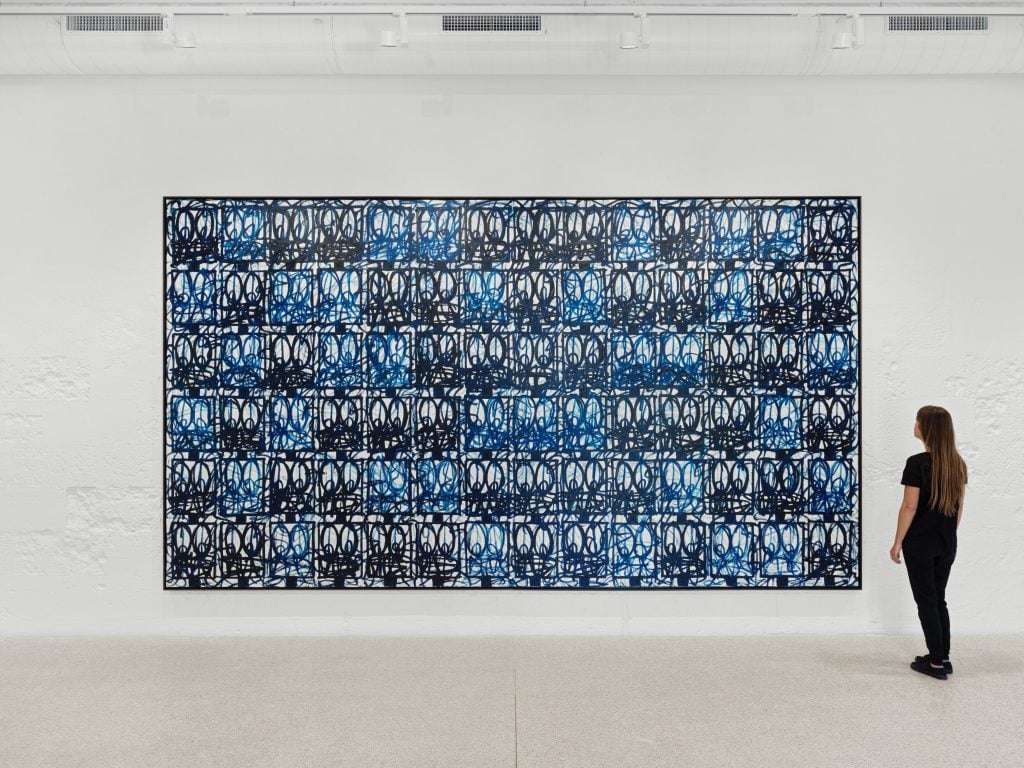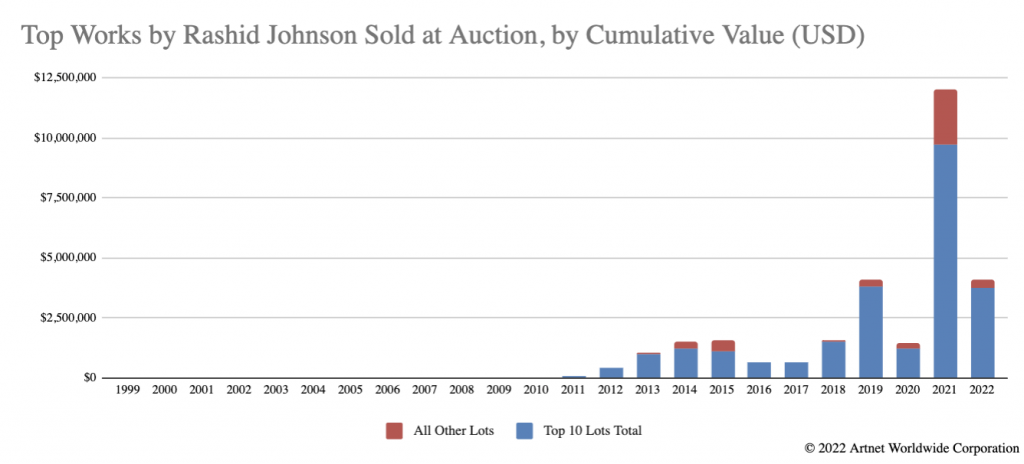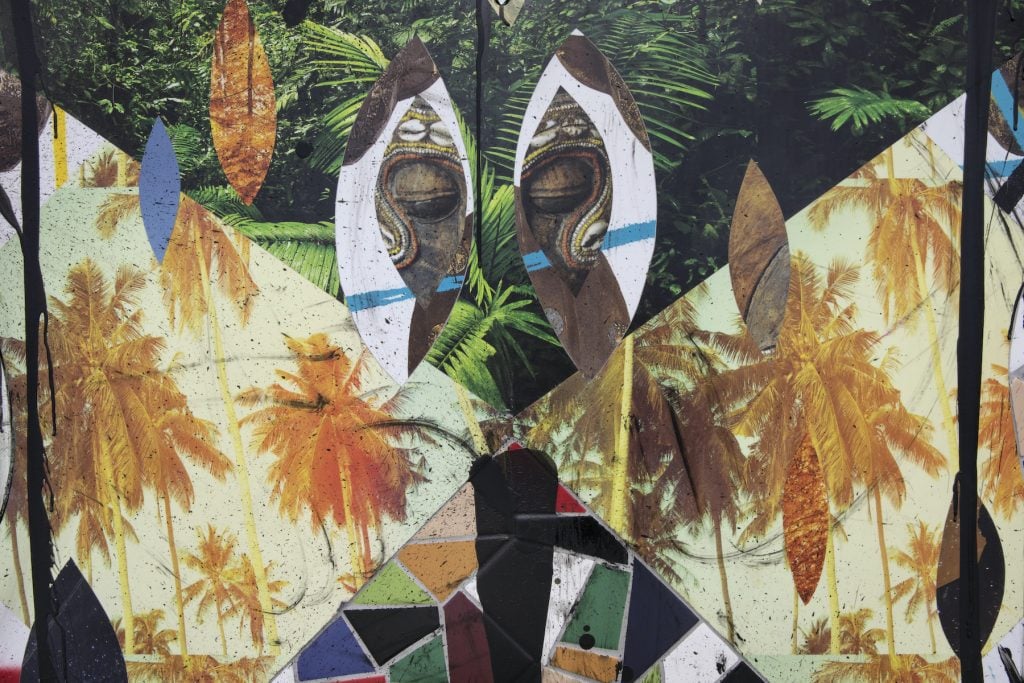The Appraisal
For Some Collectors, Rashid Johnson’s Work Has Become a Symbol of Access and Influence. How High Can His Prices Go?
The artist, whose work just sold swiftly at Art Basel, is the subject of an exhibition at Hauser and Wirth in Menorca.

The artist, whose work just sold swiftly at Art Basel, is the subject of an exhibition at Hauser and Wirth in Menorca.

by
Naomi Rea

With Art Basel in the rear view, art-world insiders traded the belle-époque rooms of the Trois Rois hotel for top-deck cabins on their summer yachts, and Hauser and Wirth hosted a reception for Rashid Johnson’s latest solo show at its Mediterranean outpost in Menorca. (Read our review of the show here.)
The 45-year-old artist’s recognizable paintings—which touch on contemporary themes while harkening back to established art-historical traditions—have become increasingly hard to buy in recent years, with long waiting lists and priority given to collectors generous enough to help works make their way into museum collections.
We took the occasion to delve into Johnson’s market history to see what we could discern about its past, present, and future.
Auction Record: $2.6 million, achieved at Christie’s New York in November 2021
Johnson’s Performance in 2021
Lots sold: 43
Bought in: 5
Sell-through rate: 89.6 percent
Average sale price: $279,729
Mean estimate: $123,169
Total sales: $12 million
Top painting price: $2.6 million
Lowest painting price: $17,446 for a spray paint on mirror work from 2008
Lowest overall price: $1,125, for a stamped fine bone china plate in an edition of 175 produced by Coalition for the Homeless


Rashid Johnson, Untitled Escape Collage (2017). Photo by Stephanie Powell. Courtesy of David Kordansky Gallery.
Rashid Johnson is among a cadre of American artists whose work embraces themes of art history, individual and shared cultural identities, philosophy, poetry, and critical theory. How much that work will appreciate in the history books, it is too early to tell, and there is a lot to unpack within his wider artistic practice. But the growth of his market can be attributed to the explosion of interest in ultra-contemporary painting and his identification of a key strategic recipe: domestically scaled, wall-hanging works that are powerful and recognizable but not too challenging. Hard to acquire on the primary market and expensive on the secondary one, they are increasingly part of the vocabulary of good taste—a trophy of market access and a sign of influence among top collectors.
As an American artist based in New York, Johnson has room to expand his profile in Europe and Asia, though he now has a following in France and a forthcoming solo exhibition at the Long Museum in Shanghai. Meanwhile, his galleries are encouraging collectors to help place the work in museums worldwide. It seems like a good strategy that will secure Johnson a place in history—though at just 45, he has plenty of opportunity left in his career to experiment and make his mark beyond the paintings the market loves. And this could make the difference between work that is owned by museums of the future and work that is shown in them.
It remains to be seen how the whispers of recession will affect the ballooning prices for ultra-contemporary painting writ large. Then again, for certain echelons of largesse, recession doesn’t really mean anything.